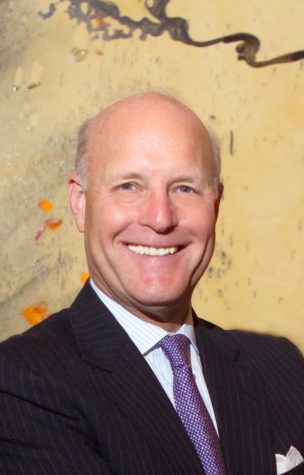Inside the ‘Art Mafia’ with John R. Lane ’66
April 19, 2023

This article is the second in a series of profiles about alums who comprise the famed Williams “Art Mafia” — a group of leaders in the museum industry who were all undergraduates at the College during the 1960s and 1970s. John R. Lane ’66 spoke with the Record about his time at the College and his decades-long career in the art world.
John R. Lane ’66 served as the Eugene McDermott Director of the Dallas Museum of Art for nine years before retiring in 2008. He first fell in love with art during his time at the College, when he took classes with professors — like S. Lane Faison ’29 and Whitney Stoddard ’35 — who taught and inspired the so-called Williams “Art Mafia,” of which Lane would become a part.
Lane’s career in the art world included positions at the Brooklyn Museum, the Carnegie Museum of Art in Pittsburgh, the San Francisco Museum of Modern Art and finally the Dallas Museum of Art. Though Lane is now deeply immersed in the art world, Lane graduated cum laude with honors not in art history or studio art, but in American studies.
“I was not an art history student,” Lane said. “Although I took some art history, I was really more in the history department, and especially the American studies department.”
Lane took his first art history course at the suggestion of Earl A. Powell III ’66, his college roommate, fellow member of the “Art Mafia,” and later Director of the National Gallery of Art who had praised the teaching style of Faison. “Faison was one of the three professors during my time there who proselytized and converted a number of Williams boys who might have otherwise been doctors or lawyers or bankers, and encouraged them to consider a life in art and art museums,” Lane said.
“[Powell] said to me, ‘You’ve got to do this,’” Lane said, referring to Faison’s classes. “And I, too, was smitten. That was a turning point in my college life.”
Faison’s pedagogy emphasized the pleasure of the art-viewing experience, which Lane said was not always the case at other colleges and graduate programs. “The style of teaching [at the College] was more about the visual experience, rather than trying to dig into the arcane symbolisms and content meanings of [a piece], so it was seductive,” Lane said.
There was one moment in particular in Faison’s modern art course that stood out to Lane. “He put up on the screen Matisse’s Red Studio, and that picture was a life changer for me because it was so radical in its own way,” Lane said. “That was the first work of art that I took to my heart, and Faison [managed not to] overanalyze it but to give you a sense of the elements that made that picture so beautiful and emotional.”
Lane had studied modern architecture with Stoddard, another of the three leading “Art Mafia” professors — the others being Faison and Professor William Pierson. Lane said this course gave him the background knowledge to oversee the construction of buildings at the Dallas Museum of Art and the Carnegie Museum later in his career. “Museums are always thinking about renovations and additions,” Lane said. “It was helpful to have the context of modern architecture studies… Stoddard’s teachings about the background of what I would encounter 30 years later were important to me.”
Though he appreciated the influential teachings of the three leading professors, Lane noted that the success of the “Art Mafia” phenomenon — in which several alums of the 1960s and 1970s went on to become major players in the art world — cannot entirely be attributed to them. “Museums were fixing to explode in terms of their popularity and their services to their communities in the 1960s,” he said, citing an exhibit of Tutankhamun’s treasures as the first blockbuster exhibit in America. “Since we had a well-rounded education at the College, we were what boards of trustees were looking for [to lead museums] in the 1970s.”
Regardless, Lane described his appreciation of the three professors’ impressive knowledge. “It was beautiful, it was fun, and they were charismatic,” Lane said. “All three of them were excellent conveyors of artistic and cultural knowledge.”
After his time at the College, Lane served as an officer in the United States Navy. He then earned an M.B.A. from the University of Chicago and an A.M. and a Ph.D. in art history from Harvard.
The art world has changed since his graduation from the College, Lane said. “I think it’s tougher now because there was a closer [museum] community 50 years ago, but now the museum world is much, much bigger,” he said. “It has changed radically from a place where historic collections were the most important and contemporary art was considered speculative, [to one where] 90 percent of graduate students have studied contemporary art, because that’s where the jobs are.”
Lane has remained involved with the Dallas Museum of Art since his retirement in 2008. In reflecting upon his career, Lane described his time at the College as a turning point. “If I hadn’t had the Williams experience, I would never have fallen in love,” he said. “I don’t think that I would have made a profession of it if I had to be a scholar of art history in the ways that [Harvard graduate school and other colleges] were teaching it in the most granular form… What I loved about art was looking at it.”







